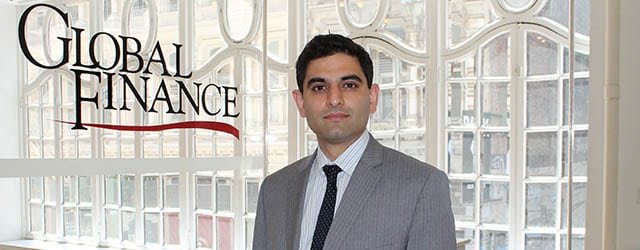Global Finance sat down with Ommeed Sathe, vice president and head of impact investing at Newark, New Jersey-based insurer Prudential Financial, to discuss how corporate social responsibility and profitable investing can go hand in hand.

Global Finance: Prudential, which has over a trillion dollars in assets under management, has been increasingly active in impact investing. You’ve said the results are promising (5%–6% average annual return). What is your strategy and organization?
Ommeed Sathe: My division, impact investments, is part of Prudential’s Office of Corporate Social Responsibility. It houses an investment function, a philanthropic function and an employee volunteer function. We’re relatively unique because we have all three under one roof. Impact investment at Prudential has been around for some time. The program was formalized in 1976, and at that time it was small. We started investing about $50 million a year but began ramping up around 2010. We expect to build up a $1 billion impact portfolio by 2020.
GF: What’s the distinction between socially responsible investing (SRI) and impact investing?
Sathe: Socially responsible investing in my mind includes instruments like green bonds, ESG (environmental, social and governance) bonds. They are most of what you’ll see on the BlackRock platform (BlackRock Impact), which means they are public instruments, public bonds, etc. Typically, they are subsets of whatever exists in the marketplace. They are negatively screened: That means you take an existing product, screen out something that’s not green, and you are left with something green. Impact investing is slightly different. It’s actively seeking out opportunities that both have social impact and can be profit-making. Most of what we invest in is private—private equity, private debt, venture capital. And, unlike [with] screened products, we are going out and finding those investments. In many cases, we’re investing in businesses that wouldn’t have existed otherwise. Most of what you see in financial services is people finding investments. We are actually making them. It can mean investing in an entrepreneur. Often, we find an entrepreneur [we like] and bring others along—investors, academics, regulators—to develop the initiative.
GF: What’s the scale of SRI versus impact investing?
Sathe: Both are very, very small. If you make SRI big enough so it includes clean energy, then it looks bigger. Some people even call small-business lending part of SRI. By contrast, impact investing is much smaller but growing rapidly. The teams also are different. An SRI team is composed of fixed-income managers. Our team is composed of venture capital types, investment professionals.
GF: How would you describe the financial returns?
Sathe: We are often looking at areas that are heavily regulated, where conventional capital won’t go: charter schools, access to healthcare, lending sectors where borrowers don’t know where to turn. Many of these areas have a great deal of overlap with areas where there is maximum social impact. If you choose to go there, though, you’ll find that the investments will be in line with or outperform mainstream investments. Prudential has earned strong returns by being the first to invest in products like affordable housing that eventually crossed into the mainstream.



